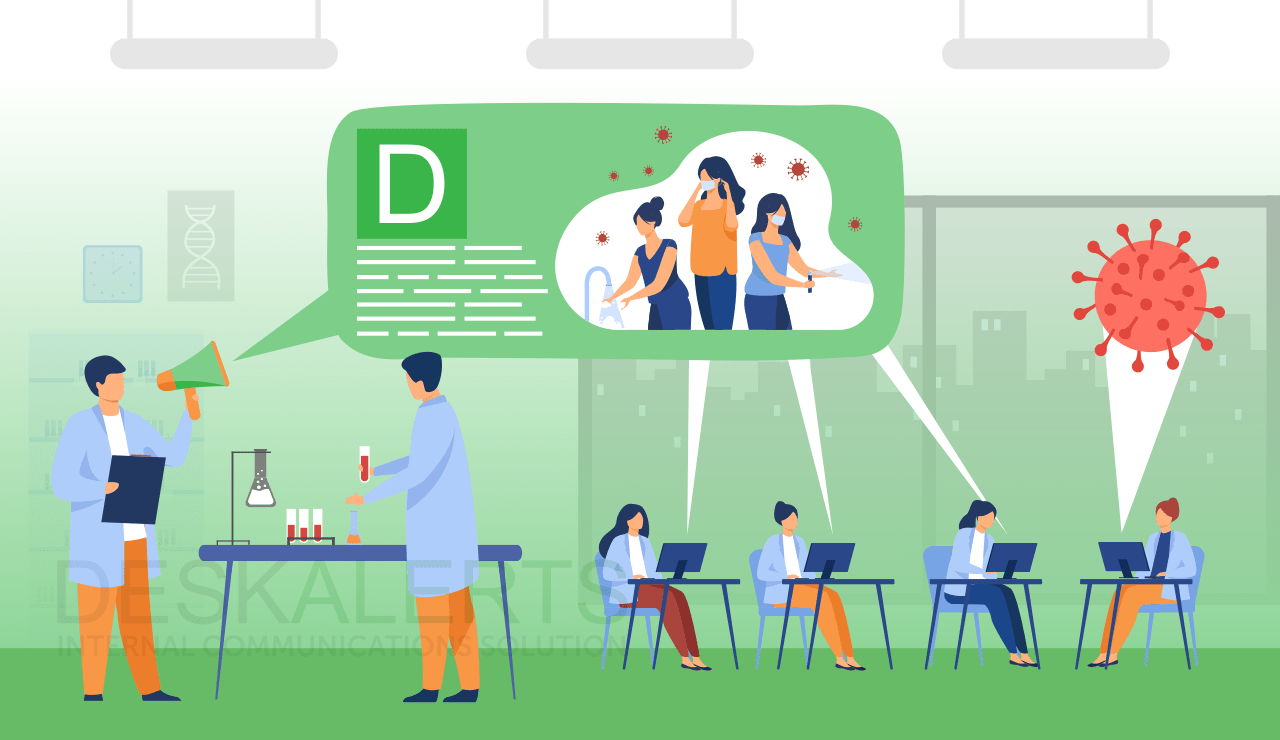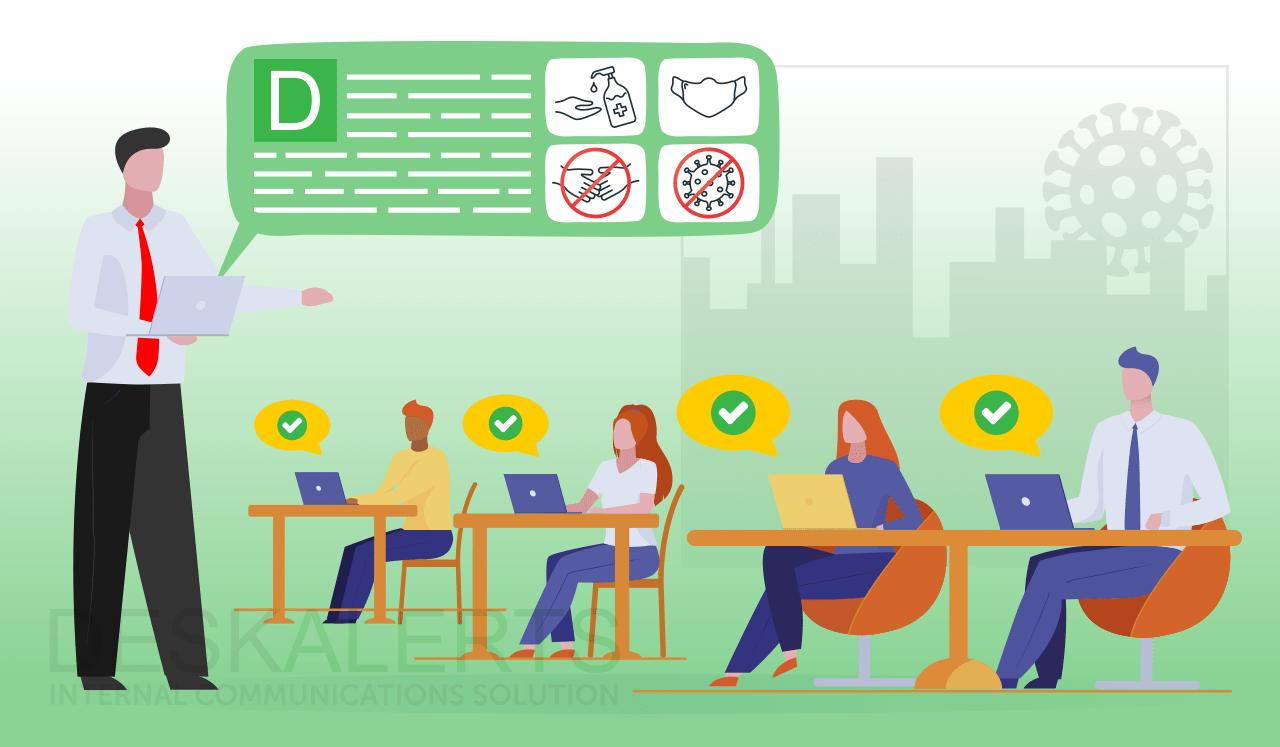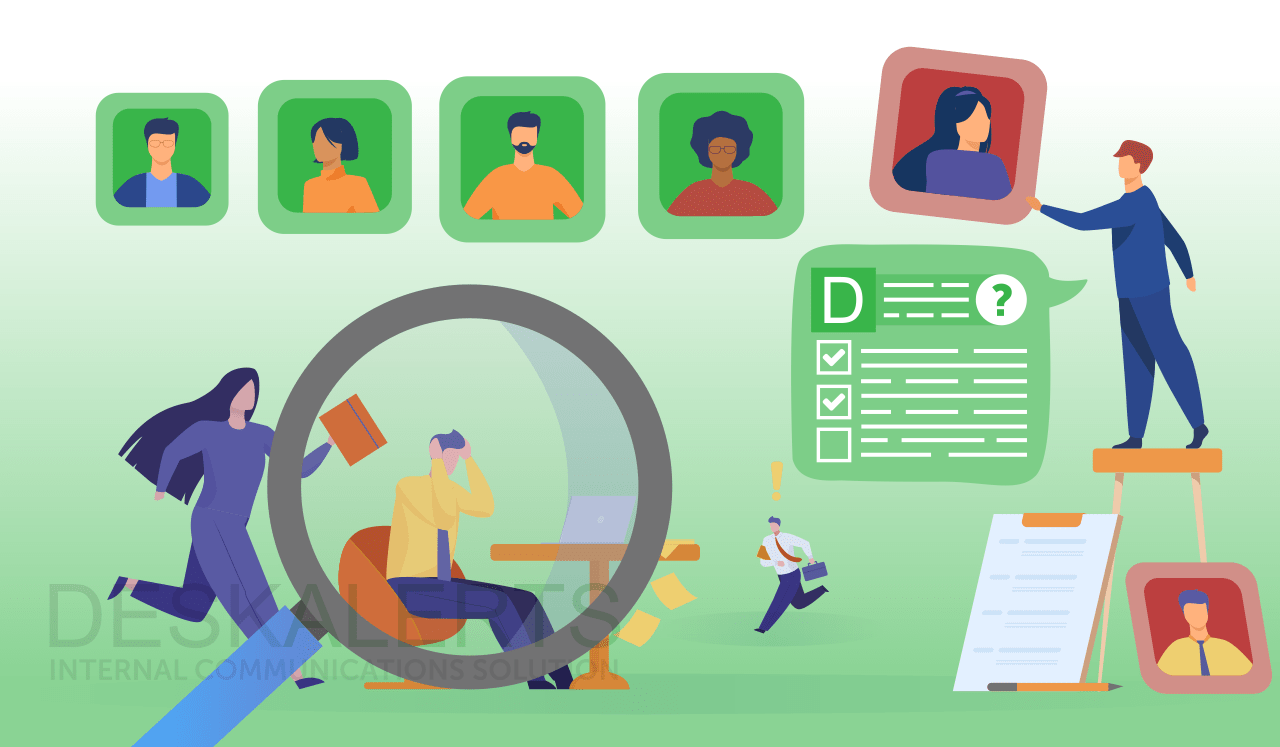 The COVID-19 pandemic is having a different impact on different countries around the world. While some economies remain closed and populations are in lockdown, others are beginning to open back up and workers are returning to their offices as they reopen business. Even in these countries, the pandemic isn’t completely over without the virus being eradicated. So for companies operating in places where employees can begin returning back to work, it’s essential to have a plan in place that can be easily implemented in order to keep your employees safe from the virus.
The COVID-19 pandemic is having a different impact on different countries around the world. While some economies remain closed and populations are in lockdown, others are beginning to open back up and workers are returning to their offices as they reopen business. Even in these countries, the pandemic isn’t completely over without the virus being eradicated. So for companies operating in places where employees can begin returning back to work, it’s essential to have a plan in place that can be easily implemented in order to keep your employees safe from the virus.
Getting started on creating your organization’s return to work plan
Before you design the content of your return to work plan, you should establish a governance team that comprises of representatives from different areas of your business. This might include HR, facilities, health and safety, IT, communications and other teams as well as managers from different project or work teams who can advise on what is essential for their employees.
This team should be involved in the design and implementation of the plan, and should also be available to meet on an ongoing basis once employees begin to return to the workplace to monitor and manage any emerging issues.
The return to work plan needs to address and identify any potential workplace health and safety risks and empower your management team to lead your employees through this new chapter of work, while also addressing other strategic issues such as the future outlook for your business and your industry, and whether things will be “normal” with returning back to work, or a very different landscape for your business.
What needs to be in your return to work plan?
Your return to work plan should address these key issues, regardless of your geographic location, any relevant local laws, the number of employees you have, the nature of your business and the industry that you operate in and how it will reopen business.
1. What is your medium to long term plan for the business?
There are many factors that will determine your work plan to reopen the workplace after COVID-19… not all of them are related to health and safety.
To help inform your return to work plan you need to determine what your business is going to look like in the post-COVID-19 world, if you need to make any changes to your business continuity plans, whether or not any economic downturn is affecting your business, whether you need to change direction with your business focus or reprioritize work. It should also factor in any legal, regulatory or fiduciary responsibilities that your organization has.
2. Who needs to return?
Some companies have determined that the transition to remote work has been quite successful for their employees, so they’re now offering it as an indefinite working option for those who want to keep up this level of flexibility.
There are other companies where this might not be a viable solution. In other companies there are employees in roles who can’t work from home, while some employees in that company can. And there are also many employees who miss working in an office environment and will want to go back as soon as they can.
All these factors need to be taken into account when designing your work plan to reopen the workplace after COVID-19:
- Is a return to the office essential?
- If so, which employees need to go back?
- How will that work with government policies such as social distancing?
- Will you need to consider staggered start times?
- Alternating teams who work in the office one week and from home the next?
- Only some people attending the office at all times while others work from home?
You may also have vulnerable employees who are more at risk than others if they contract Coronavirus. Others may have children who are still unable to attend school. A flexible and tailored approach to returning to work will need to be considered.
3. What are your workplace health and safety obligations?
Employers have a legal and moral obligation to provide a safe workplace to their employees. In a world where COVID-19 still poses a threat, this means that employers must follow all relevant government guidelines to operate safely and protect workers at all times, as well as in designing their COVID back to work plan.
It’s essential that you implement and promote safe work practices that reflect the advice of health authorities in your local area and ensure your workplaces are hygienic as you return to the workplace after COVID-19.
You need to be prepared to respond in the event of any confirmed COVID-19 cases affecting your workplace - including working with health authorities, testing your other employees, cleaning, quarantining and a possible interim return to working from home arrangements.
In addition to this, failure to comply with health and safety obligations could result in liability risks for your business.
Workplace health and safety laws and overarching government health regulations about operating in the pandemic will differ depending on where you are located, but in general you should be mindful of potential risks.
To mitigate these risks ensure your organization is following applicable government guidelines including:
- Ensuring employees’ sensitive personal health information is kept private and secure
- Ensuring that requests for employees to return to the workplace are not discriminatory in nature
- Being mindful that requiring employees to attend the workplace before it is safe to do so and/or not putting appropriate safety measures in place could result in personal injury or wrongful death lawsuits if the affected employee contracted COVID-19 in the workplace.
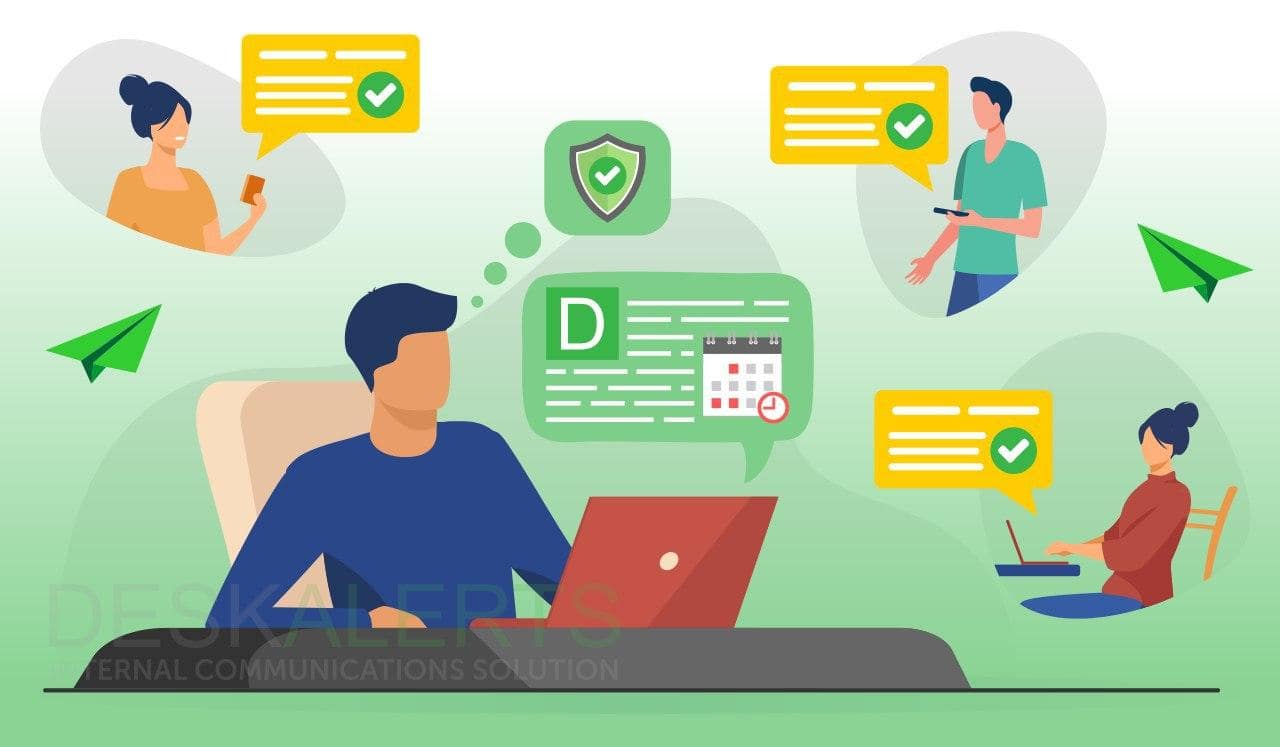
4. Can your returning employees get to and from work safely?
A major hurdle to take into account in your return to work plan while the virus is still circulating in the community, is public transport. If you have employees dependent on taking public transport to get to and from work, there may be additional issues that make this a difficult premise.
For example, in some cities, the number of passengers allowed in a train carriage or on a bus is severely restricted - normally these services are packed and teaming with people. When extra services aren’t being added, it means many commuters will be stranded or massively delayed each day, which could negatively impact your back to work plan.
When there are no social distancing restrictions, your employees could be at risk of contracting the virus on a packed train or bus as they return to the workplace after COVID-19.
Some companies are looking into solutions such as providing employees with discounted or paid parking, operating their own shuttle services or giving employees vouchers for cabs.
5. What measures do you need to put in place to make your premises safe?
First and foremost, you should determine if it is safe to reopen your office environment if it has been empty for some time. There have been reports of mould and legionella and other problems afflicting buildings around the world that have been empty for some months. Assess your offices and determine if they are safe to occupy, and if not, take the appropriate steps to make them fit-for-use.
Again, every workplace is different, but a return to the office in the short to medium term will need to factor in hygiene and social distancing provisions. Communal areas such as break rooms and kitchens might not be feasible to use. You may need to hire more cleaners to clean more regularly. Other measures post COVID-19 return to work plan might include floor markings for physical distancing, reducing how many desks are in an office, signage, protective screens and so on.
COVID-19 may present challenges for a long time to come, and if that’s the case it might affect the design of your workplace and you may also need to consider whether open plan offices are going to be viable for the long term.
6. Do you need to supply PPE to your workers?
At a minimum you will need to provide soap and hand sanitizer to your employees. Depending on where you are, what work you do, and what role your employees have you may need to provide them with more PPE when they return to the office. This might include gloves, masks, gowns, face shields and screens.
There have been many PPE shortages reported around the world.
- Are you able to source these items?
- How many will you need?
- Do you have access to a reliable, ongoing supply line?
- What is the risk to your employees, and what is your liability as an employer, if you require them to work without protective equipment?
7. Do you have an adequate system in place to communicate with employees?
When employees are returning to the workplace in such an uncertain and volatile time, it’s essential that you have sound internal communications processes in place. Not only do you need to be able to communicate important policies and health and safety information as part of your return to work plan, but if the situation changes - for example there is a confirmed case of the virus among your employees - you will need to be able to quickly communicate with your entire team.
Communications should be regular, factual, and written in plain language so your employees can understand them.
It’s crucial that you develop an after COVID communications plan that sets out how, what and when you will communicate with your employees.
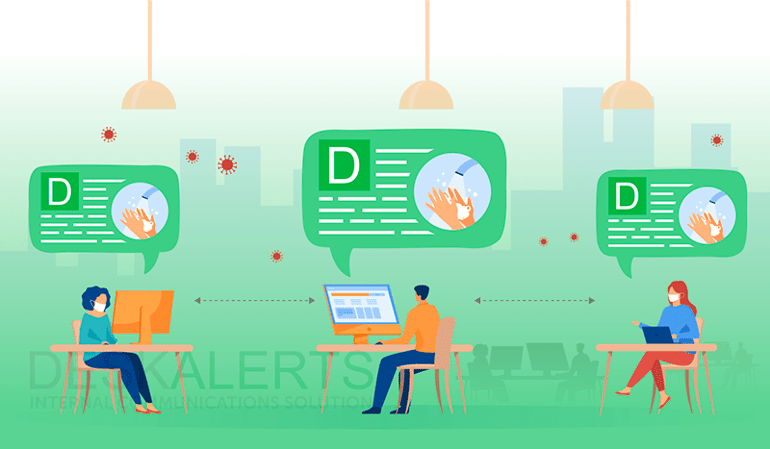
Your after COVID communications plan should:
- Have key messages for employees about the return to the workplace (get the sample return to work letter from employer to employee after COVID).
- Identify potential risks and scenarios that could occur that may need to be communicated quickly to employees.
- Identify the best channels for communicating with employees.
- Mandate a centralised repository of COVID-19 information and education for employees such as an intranet portal.
- Include graphic elements such as screensavers, corporate wallpapers and digital signage to cater for visual learners.
- Include clear guidelines that communications should be factual, and written in plain language so your employees can understand them.
- Include guidelines on timeliness to ensure that your employees are getting information straight from the company and not relying on rumours or speculation.
- Factor in regular updates about policies and procedures in the post-COVID workplace, such as a mask policy at work, hygiene, social distancing, reporting illnesses and so on.
- Establish protocols for two-way communication to quickly gather feedback from employees.

8. What systems will you put in place for ongoing monitoring and response?
The pandemic is presenting challenges most of us have never experienced before, and is unpredictable.
Your business return to work plan needs to reflect many different scenarios including:
- what will happen if one or many of your employees become ill,
- what will happen in the event of high absences,
- protocols for notifying management about positive test results, potential legal issues, privacy and so on.
If there is a “second wave” of the Coronavirus pandemic and lockdown restrictions return you will need to move quickly to have employees working from home again.
9. Have you consulted your employees?
It’s important that you involve your employees in the return to work plans, for a host of reasons. Employee engagement is good for morale - particularly when people are stressed and fearful.
Unfortunately, some of the aspects of your company culture that your employees value and love (for example, socialising with peers) may not be able to return any time soon in the form that employees are used to. However engaged employees can help you design new rules and new “norms” and implement your COVID-19 back to work plan as you reopen that will create a harmonious team environment despite the challenging circumstances.
***
Returning back to work following COVID restrictions is destined to be a significant challenge - everything about this virus has been to date. But by adopting a well-thought-out strategic plan, your company should be able to keep operating efficiently in the circumstances while also minimizing the risk to your employees.
 Caroline Duncan
Caroline Duncan
 The COVID-19 pandemic is having a different impact on different countries around the world. While some economies remain closed and populations are in lockdown, others are beginning to open back up and workers are returning to their offices as they reopen business. Even in these countries, the pandemic isn’t completely over without the virus being eradicated. So for companies operating in places where employees can begin returning back to work, it’s essential to have a plan in place that can be easily implemented in order to keep your employees safe from the virus.
The COVID-19 pandemic is having a different impact on different countries around the world. While some economies remain closed and populations are in lockdown, others are beginning to open back up and workers are returning to their offices as they reopen business. Even in these countries, the pandemic isn’t completely over without the virus being eradicated. So for companies operating in places where employees can begin returning back to work, it’s essential to have a plan in place that can be easily implemented in order to keep your employees safe from the virus.






